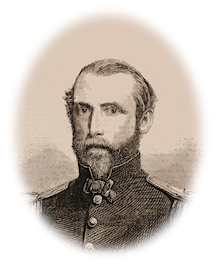April 9, 1861.—The four-gun battery on the upper end of Sullivan’s Island that was unmasked yesterday morning by blowing up the wooden house standing in front of it was situated very nearly upon the prolongation of the capital of this fort, and, therefore, could enfilade the terre-pleins of both flanks of the work, as well as sweep, to a certain extent, the outside of the scarp wall of the left flank, where alone a vessel of any considerable draught of water could lie near to the fort and discharge her cargo. It therefore became a matter of importance to provide traverses to intercept the fire along the barbette tier of the right flank, as this contains the heaviest battery, intended to operate both upon Fort Moultrie and Cummings Point, and also to prepare means for quickly unloading any vessel that may run in alongside the left flank with supplies for the garrison.
For the first purpose I commenced to prepare (for want of sand bags) a large double curb of boards and scantling, to be elevated upon the top of the parapet at the right shoulder angle, and being filled with earth hoisted from the parade, to serve for a traverse to protect this flank.
For the second I prepared ladders and runways to take in re-enforcements and provisions at the embrasures rapidly, one embrasure being enlarged so as to admit barrels, and also cleared the passage around to the main gate. A large stone traverse was also commenced to cover the main gates from the fire from Cummings Point. The masons were put at work cutting openings through the walls of the officers’ quarters so as to admit a free communication through them, on the first and second floors, from one flank to the other. The battery in the right shoulder angle, first tier, was also being improved by substituting a 42-pounder for a 32-pounder, cutting into the magazine wall, so as to allow the gun on the gorge to be used against the batteries, and cutting away one side of the embrasure, so as to allow the first gun on the right flank to be used in the same way.
The quantity of bread became very small, and only half-rations of it were allowed to the men. The enemy’s steamers were very active carrying supplies to their batteries.
